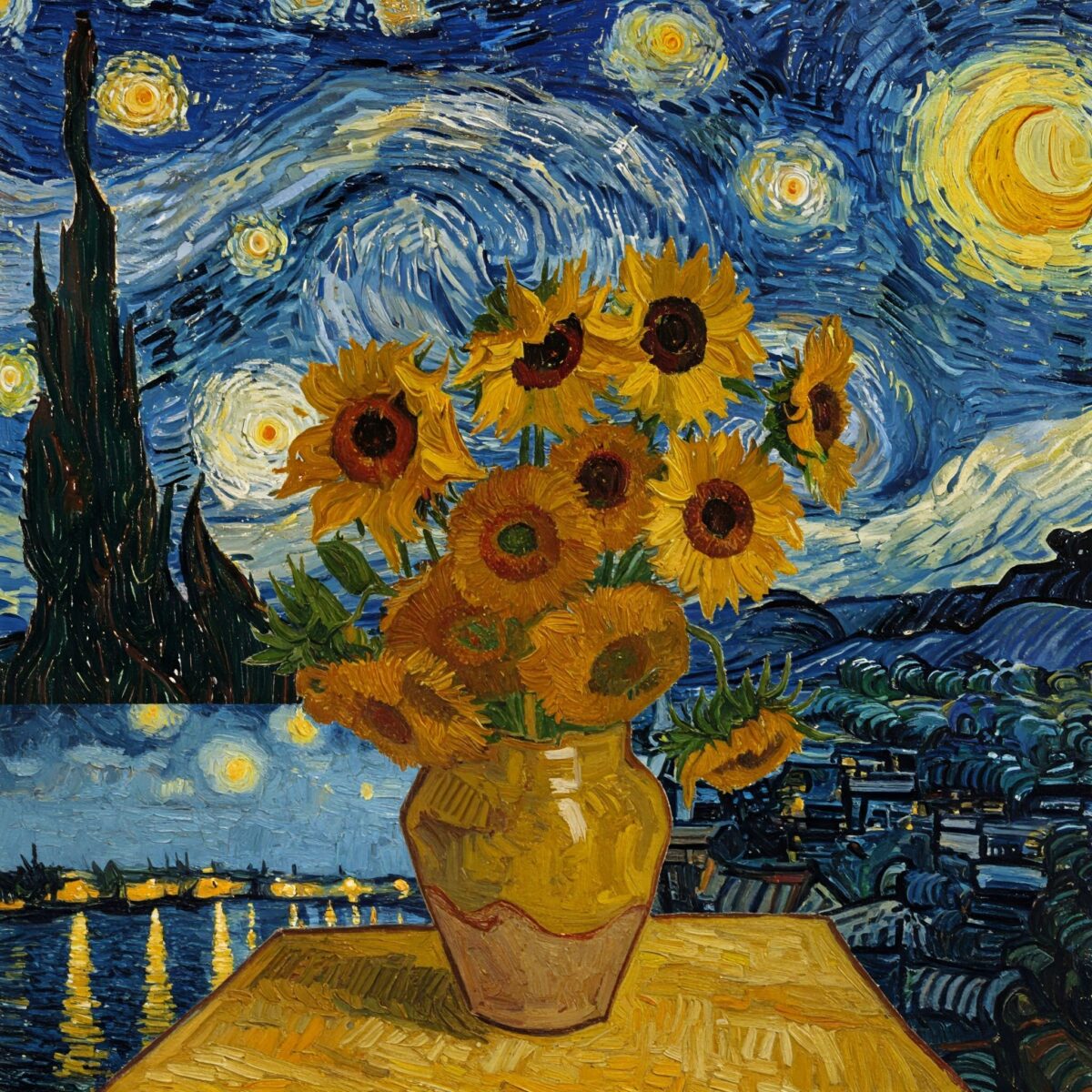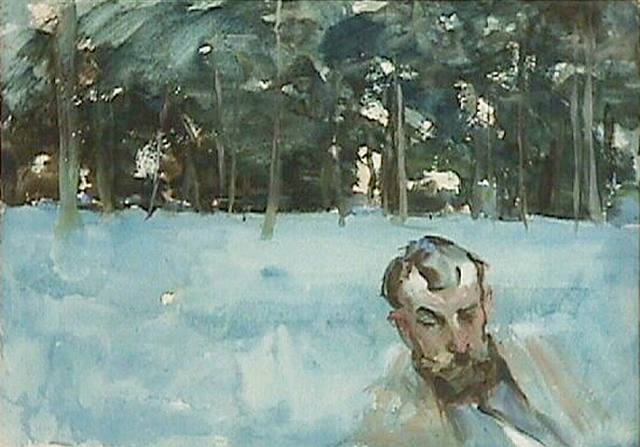Vincent van Gogh’s paintings have captivated art lovers for generations with their bold colors, expressive brushstrokes, and emotional depth. Despite selling only one painting during his lifetime, Van Gogh’s work now hangs in the world’s most prestigious museums and his famous paintings are recognized globally. The Dutch painter’s unique style, combining vibrant colors with powerful emotional expression, revolutionized the art world and continues to influence artists today. His famous paintings showcase not just technical brilliance but also provide a window into his troubled mind and passionate soul.
Key Points:
- Van Gogh created over 850 paintings in just 10 years
- His distinctive style features bold colors and expressive brushstrokes
- Most famous works include The Starry Night and Sunflowers
- His paintings now sell for millions at auction
- Van Gogh’s art offers profound insights into human emotion and perception
The Most Famous Van Gogh Paintings That Changed Art Forever
Vincent van Gogh’s journey as an artist was brief but extraordinarily productive. In just a decade, he created hundreds of paintings that would forever change how we understand art. His famous paintings are characterized by bold colors, thick application of paint, and swirling brushstrokes that seem to make the canvas come alive. Let’s explore the ten most famous Van Gogh paintings that everyone should see at least once in their lifetime.

1. The Starry Night (1889)
Arguably the most famous Van Gogh painting, The Starry Night depicts a swirling night sky over a peaceful village in Saint-Rémy-de-Provence, where Van Gogh was staying at an asylum. The painting’s swirling clouds, bright stars, and crescent moon create a sense of movement and emotion that’s impossible to ignore. The vibrant blues contrasted with brilliant yellows showcase Van Gogh’s mastery of color. Today, this masterpiece is housed at the Museum of Modern Art in New York City.
The painting represents more than just a night scene—it’s a window into Van Gogh’s perception of the world. Created during a difficult period in his life, the turbulent sky might reflect his inner emotional state, while the peaceful village below suggests a longing for tranquility.
2. Sunflowers (1888)

Van Gogh’s Sunflowers series includes several paintings, with the most famous version displayed at the National Gallery in London. These vibrant yellow flowers against a yellow background demonstrate Van Gogh’s fascination with color. He painted them to decorate the room of his friend Paul Gauguin, who was coming to stay with him in Arles, France.
What makes this famous Van Gogh painting special is his ability to create different textures and tones using primarily one color. The painting showcases his impasto technique, where paint is applied so thickly it stands out from the canvas.
3. Café Terrace at Night (1888)

This enchanting night scene depicts a café in Arles, France, illuminated under a starry sky. The contrast between the warm yellow light from the café and the deep blue night creates a magical atmosphere. What’s fascinating is that Van Gogh painted this entirely on location, working at night under poor lighting conditions.
The painting represents Van Gogh’s move toward more colorful night scenes and shows his ability to create light through color rather than through traditional methods of shading. The café still exists today and has been renamed “Café Van Gogh” in honor of the artist.
4. The Potato Eaters (1885)

Unlike his later colorful works, The Potato Eaters comes from Van Gogh’s earlier, darker period. It depicts a family of peasants gathered around a table eating potatoes by lamplight. The somber colors and rough brushwork reflect the harsh reality of peasant life.
This painting was incredibly important to Van Gogh, who wanted to show the dignity of rural workers. He wrote to his brother Theo: “I wanted to convey the idea that these people eating potatoes by the light of their lamp have dug the earth with the same hands they are putting in the dish.”
5. Irises (1889)
Painted during Van Gogh’s stay at the asylum in Saint-Rémy, Irises showcases his fascination with nature. The brilliant blue flowers stand out against a bright background, creating a sense of life and movement. Van Gogh painted this work from nature in the asylum garden.
What’s notable about this famous Van Gogh painting is that it was created during a time of personal crisis yet shows no sign of his inner turmoil. Instead, it celebrates the beauty and vitality of nature. In 1987, it became one of the most expensive paintings ever sold when it fetched $53.9 million at auction.

A Perfect Balance: Color and Emotion in Van Gogh’s Art
One of the most remarkable aspects of Van Gogh’s painting style is his ability to convey powerful emotions through color choices. Unlike many of his contemporaries, Van Gogh wasn’t interested in exact representation. Instead, he used colors to express feelings and create emotional impact.
His approach was revolutionary for the time and influenced generations of artists who followed. Modern abstract artists and expressionists owe much to Van Gogh’s willingness to break traditional rules of painting in favor of emotional truth.
6. Almond Blossoms (1890)

Painted as a gift for his newborn nephew, also named Vincent, Almond Blossoms represents hope and new beginnings. The painting shows delicate white almond blossoms against a bright blue sky, influenced by Japanese printmaking that Van Gogh admired.
This painting stands out in Van Gogh’s collection for its optimistic tone and delicate beauty. The branches reaching upward symbolize growth and renewal, making it one of the most uplifting of his famous paintings.
7. Wheatfield with Crows (1890)

Often thought to be Van Gogh’s final painting (though this is debated by art historians), Wheatfield with Crows depicts a dramatic landscape under a turbulent sky. The painting features a golden wheat field under threatening dark blue clouds with a flock of crows flying overhead.
The painting’s atmosphere is intense and emotional, with some interpreting it as foreshadowing Van Gogh’s suicide shortly afterward. The three paths running through the wheat field seem to lead nowhere, possibly reflecting Van Gogh’s state of mind.
8. Self-Portrait with Bandaged Ear (1889)

Following a famous incident where Van Gogh cut off part of his ear during a mental breakdown, he painted this self-portrait showing himself with a bandaged ear. The painting is remarkable not just for its historical significance but also for its artistic merit.
Van Gogh created many self-portraits throughout his career, using himself as a subject both for convenience and self-exploration. This particular portrait, with its striking green background and the artist’s intense gaze, reveals much about his psychological state during a difficult period in his life.
9. The Bedroom (1888)
Van Gogh painted three versions of his bedroom in the “Yellow House” in Arles, with the first being the most famous. The simple room with its bright colors and slightly distorted perspective creates an intimate, personal atmosphere. Van Gogh wrote to his brother that he wanted this painting to express “absolute restfulness” through color.
The painting offers viewers a glimpse into Van Gogh’s personal space and his search for a sense of home and belonging. The strong colors and simplified forms show his move toward a more expressive style.

10. Starry Night Over the Rhône (1888)
Often overshadowed by the more famous The Starry Night, this earlier night scene depicts the Rhône River at night with gas lighting reflected in the water. The painting demonstrates Van Gogh’s fascination with night scenes and his ability to transform ordinary views into magical visions.

What makes this painting special is the way Van Gogh captures the reflection of stars and city lights in the rippling water. It represents a more peaceful moment in Van Gogh’s artistic journey, before his mental health deteriorated further.
“I dream of painting and then I paint my dream.”
Vincent van Gogh
Where to See Van Gogh’s Famous Paintings
To truly appreciate these masterpieces, nothing compares to seeing them in person. Here’s where you can find these famous Van Gogh paintings:
| Painting | Location |
|---|---|
| The Starry Night | Museum of Modern Art, New York, USA |
| Sunflowers | National Gallery, London, UK |
| Café Terrace at Night | Kröller-Müller Museum, Otterlo, Netherlands |
| The Potato Eaters | Van Gogh Museum, Amsterdam, Netherlands |
| Irises | J. Paul Getty Museum, Los Angeles, USA |
| Almond Blossoms | Van Gogh Museum, Amsterdam, Netherlands |
| Wheatfield with Crows | Van Gogh Museum, Amsterdam, Netherlands |
| Self-Portrait with Bandaged Ear | Courtauld Gallery, London, UK |
| The Bedroom | Van Gogh Museum, Amsterdam, Netherlands |
| Starry Night Over the Rhône | Musée d’Orsay, Paris, France |
The Lasting Legacy of Van Gogh’s Famous Paintings
Van Gogh’s influence extends far beyond the art world. His struggles with mental health, documented in his letters and reflected in his paintings, have helped destigmatize mental illness. His determination to develop his own style despite rejection from the art establishment inspires countless artists to follow their own vision.
Modern art movements like Expressionism have their roots in Van Gogh’s emotional approach to painting. His work has been referenced in songs, movies, literature, and popular culture, making him perhaps the most recognizable artist in history.
For those interested in learning more about Van Gogh’s techniques, check out this guide on how to paint like Van Gogh for beginners.
Van Gogh’s famous paintings continue to move viewers with their emotional honesty and visual power. His art reminds us that beauty can emerge from suffering and that one person’s unique vision can change how we all see the world. Looking at a Van Gogh painting isn’t just viewing an image—it’s experiencing a moment of connection with one of history’s most passionate and brilliant artistic minds.
Whether you’re an art expert or someone who just knows they like what they see, Van Gogh’s paintings speak a universal language. His famous paintings have stood the test of time because they capture something essential about the human experience: our capacity to find beauty even in our darkest moments.
FAQ: Vincent van Gogh’s Famous Paintings
When did Van Gogh paint The Starry Night?
Van Gogh painted The Starry Night in June 1889 while staying at the asylum of Saint-Paul-de-Mausole near Saint-Rémy-de-Provence, France.
How many Sunflowers paintings did Van Gogh create?
Van Gogh created two series of Sunflowers paintings. The first series, painted in Paris, consists of four paintings of cut sunflowers lying on the ground. The second, more famous series, painted in Arles, features sunflowers in vases and includes five paintings.
Which Van Gogh paintings are displayed in the Louvre?
Interestingly, none of Van Gogh’s paintings are displayed in the Louvre. In Paris, his works are primarily housed at the Musée d’Orsay, which specializes in impressionist and post-impressionist masterpieces.
Why did Van Gogh cut off his ear?
Van Gogh cut off part of his ear during a mental health crisis in December 1888. The incident occurred after an argument with fellow artist Paul Gauguin. The exact reasons remain debated, but it’s generally attributed to his deteriorating mental health, possibly compounded by physical illness and emotional distress.
How many paintings did Van Gogh sell during his lifetime?
Van Gogh sold only one painting during his lifetime, “The Red Vineyard,” which was purchased by Belgian artist and art collector Anna Boch for 400 francs in 1890, just months before his death.
External resources:
- Van Gogh Museum – The world’s largest collection of Van Gogh’s work
- MoMA’s Starry Night page – Detailed information about The Starry Night
- Google Arts & Culture: Van Gogh – Explore Van Gogh’s work in super high resolution



